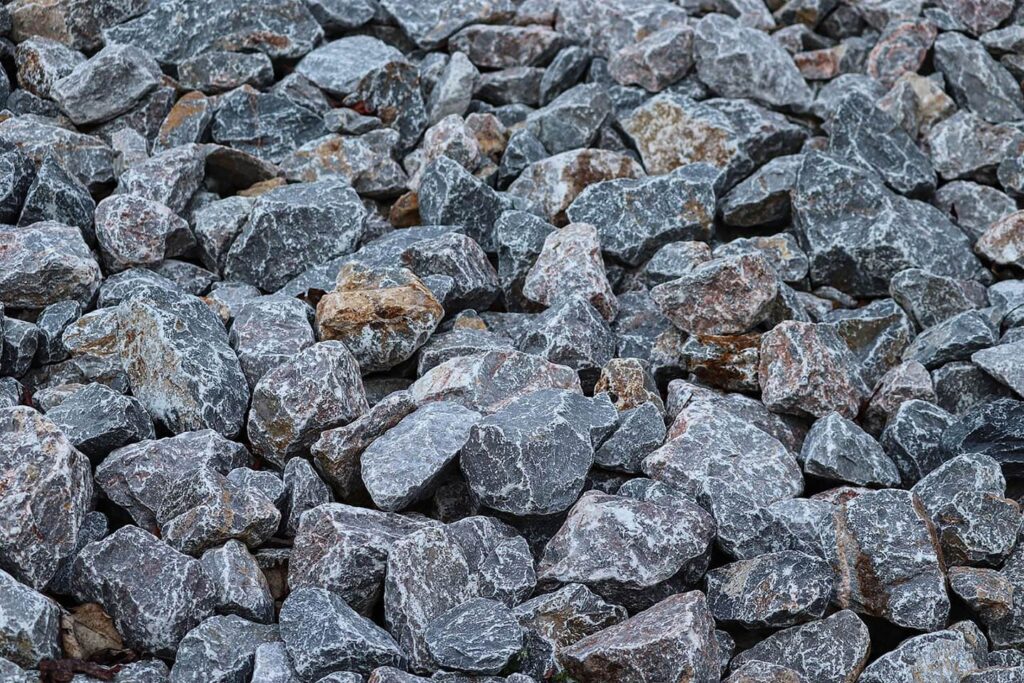-
HomeLandscaping / Tools of the TradeLandscaping What is the Best Landscaping Rock?

What is the Best Landscaping Rock?
Are you building an outdoor oasis this year or taking some time to refresh your curb appeal? Choosing the right landscaping rock can make or break your design. You’ll want to find the Goldilocks effect – the perfect marriage of natural elements, rocks, and placement that will have you doing a double-take the next time you see your home.
There is no definite answer for the best landscaping rock, but there are certainly better rocks than others. It all comes down to your personal style, what the rock will be used for, your budget, installation, and maintenance. Read on to learn about some of the most popular landscaping rock options that will level up your yard this year.
Best Landscaping Rock Options For Your Home
Pea Gravel
If you’re designing something awesome, you may want to consider bringing pea gravel to the party. This versatile landscaping rock works spectacularly as a mulch replacement, even in small areas, as a base for any decorative plants, as focal points in a design, or even as a simple ground cover.
Homeowners love choosing pea gravel for affordability and its many natural benefits. Also, it’s pretty simple to install. Not only are they stylish, with a variety of neutral grey, brown, tan, and white shades, but you can also opt for the more expensive coloured pea gravel.
The big pro for pea gravel is definitely price, maintenance, installation ease, and its natural benefits. They help the soil stay fresh by retaining water and controlling weed growth. The con? You’ll need an annual refresh and thick installation since they’re tiny in size.
Despite being a type of landscaping rock, it’s actually easy on your feet due to its smooth exterior; no shoes are required. Just remember you’ll want to consider how you’ll edge it, and you’ll want to do it well. Otherwise, the pebbles may drift around your property where you don’t want them.
Oh, and P.S. – they are the size of a pea, hence their name.
Lava Rock
Well, if pea gravel is named after its size, you can probably guess where lava rocks come from. If volcanoes came to mind, you’re right! But don’t worry, nobody is risking their life to scoop these out of an active volcano.
Lava rocks are low in density, with the most common ones boasting a rich red colour. Since they’re lightweight, they may blow away or onto your yard with high winds. Just remember to check before mowing your lawn, as they’ll definitely damage a mower blade.
Customers love lava rocks because they’re a great alternative to grass, serve as bases for yards, and can be used as ground cover instead of replacing mulch. The best part for Albertans is that these rocks retain heat. So when a cool summer breeze makes you question whether or not to take your summer activities inside, these will perfectly complement your fireside fun.
River Rock
We’ll stay on the theme here – if you were wondering where river rocks got their name, you’re probably on the right path. These rocks are naturally tumbled in river currents, giving them a smooth finish. Think of them like the big brother of pea gravel, ranging from ¾ of an inch to 2 inches (whereas pea gravel runs from ¼ to 1/8th). They also vary in style, with white, black, brown, marble, or mixed colours.
While the initial investment may cause homeowners to consider other options at first, they’re popular because they don’t require annual refreshing and are very low maintenance. It’s a permanent installation that is ideal for lining garden pathways and mulching flowerbeds. However, you’ll also see them accenting plants, fences, large boulders, or even around the home’s foundation. If you’re concerned about flooding, they can also be used to direct drainage through a property.
Limestone
Limestone isn’t only used for making countertops or other things inside your home. This landscaping rock is used in a crushed form (or large slabs for bigger projects) to make affordable gardening possible. They’re great for building a drainage ditch or as a finishing touch to a beautiful footpath to your garden.
It’s also a big boost for your soil with its rich nutrients that help your gardens flourish. It also neutralizes lawn acidity and will regulate the soil’s PH levels. If you plan to use limestone as a slab instead of crushed stone, be aware that it can be slippery when wet, so you’ll want to have it textured ahead of time with sandblasting or bush hammering.
As you can see, there is no definite answer to the best landscaping rock. It’s what’s best for you! Style, budget, and so much more can go into this decision. If you’re still undecided about what landscaping rock you should opt for, our staff at Blue Grass can help you narrow it down and even give you an idea of how much you’ll need to get the job done. Come and visit one of our locations in Calgary, Edmonton, or Red Deer to get the help you need.
What landscaping rock have you used for your home projects? Which was your favourite to work with? Share your experience in the comments with our readers so they can learn from someone who has been there!
 Customer Support
Customer Support